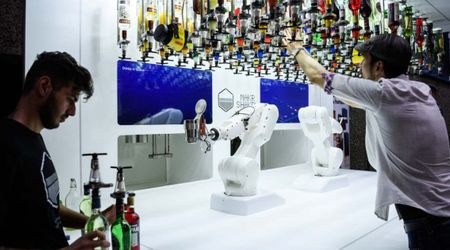'Antiques Roadshow' guest stunned as his charity store item bought for 68 cents gets a huge valuation

Something that might be available for cheap at a charity store isn't necessarily insignificant, and the true value of such items is often revealed on “Antiques Roadshow.” But even on this show, rarely has someone brought an item that they got for less than a dollar. A guest on the BBC edition of the show brought such an object, and left the expert astonished. The unique object, which was also tiny, came from Japan and was known as an inro. Turns out that it used to be part of a samurai’s outfit, and it's actual value was more than $6,700.
The inro was tiny, but the craftsmanship was impeccable. It was designed like a lobster all around and had a tree an inscription in Japanese on the other side, making it quite unique. The guest said that it was given to him by his mother when he was younger and that he’s had it for a couple of decades. "She liked charity shops, still does, and anything with an animal on it, she would give me,” he said.
Expert David Battie was immediately impressed with it. "I think it is just the most magical object,” he said, as per a report in the Mirror. "And the Japanese used to carry small objects around in their seals, medicines, spices, that sort of thing. You then come through the cord, which you've got more or less right there, to the ojime, which actually tensions that. Now it won't on yours, because the cord's too thin, you need a thicker cord."

The expert then picked it up and attached the object to his belt with the cord. He said that this was the traditional way to wear it. Battie suspected the object to be made in the 19th century, a time when the samurai had just been made obsolete by the government of Japan.
"So you had 200 years of peace, the economy's quite strong and not an awful lot of people, so they turn to making show-off objects which the Samurai can wear about his person, and inro were one of those,” he added.

The expert then revealed that the object was made of lacquer, which surprised the guest as he thought that it was plastic. Battie then shared a woeful tale of how workers who used to extract the element from the trees died an early death, as it was highly poisonous in its raw form.
Battie said that it could have been made by one the greatest lacquer artists of the 20th century, Shibata Zeshin, but he wasn’t too sure about it. "I'd have to go and do a bit of work on it. Even if it's not, it's worth £3,000 ($4,000) to £5,000 ($6,700),” he said. The guest certainly wasn’t expecting such a valuation, and said, "Oh my God. Okay.” It’s incredible how an item that once cost 68 cents was valued at thousands of dollars.



















